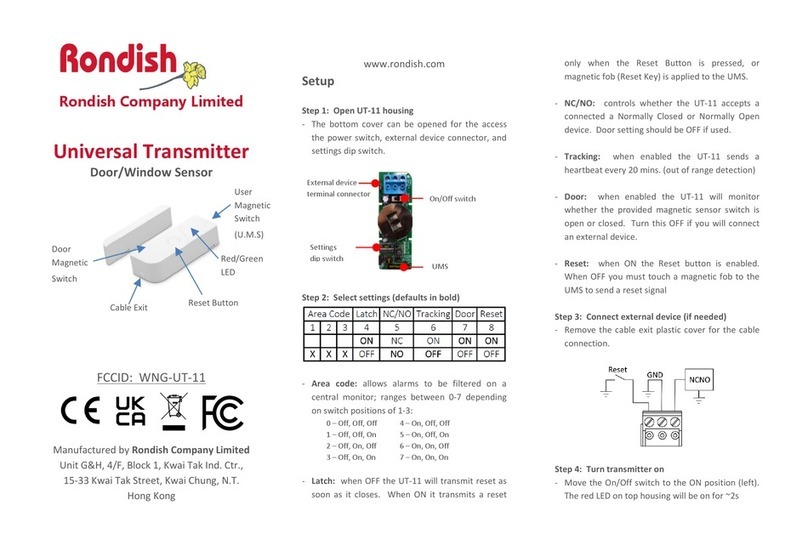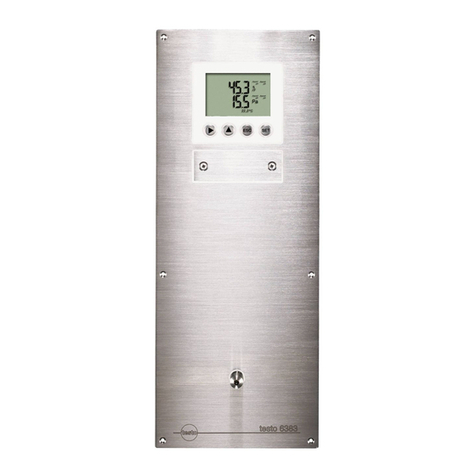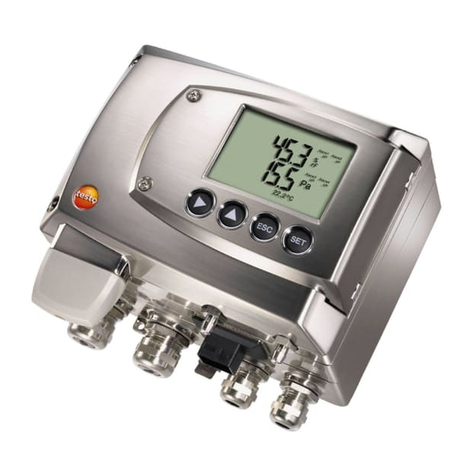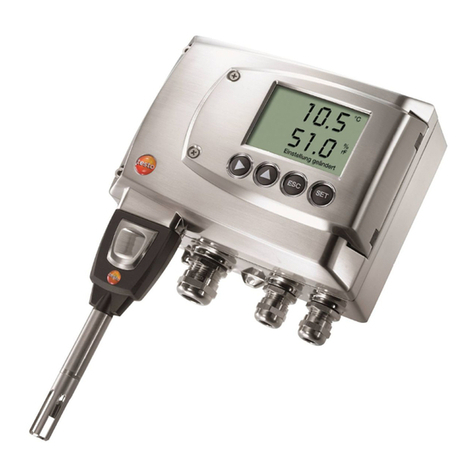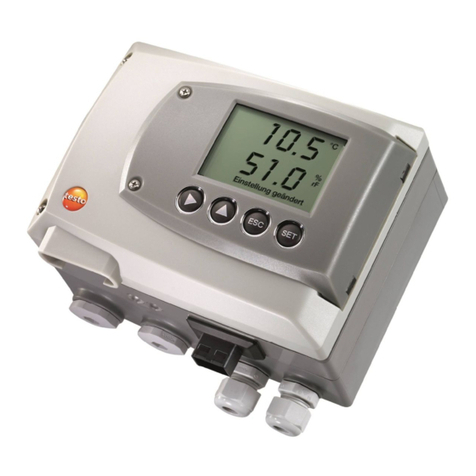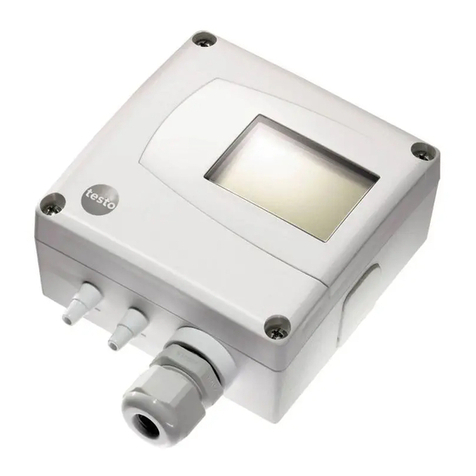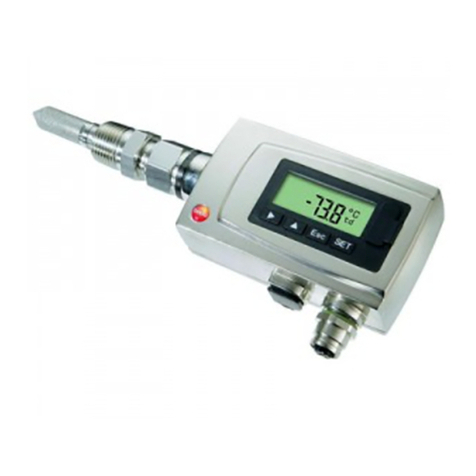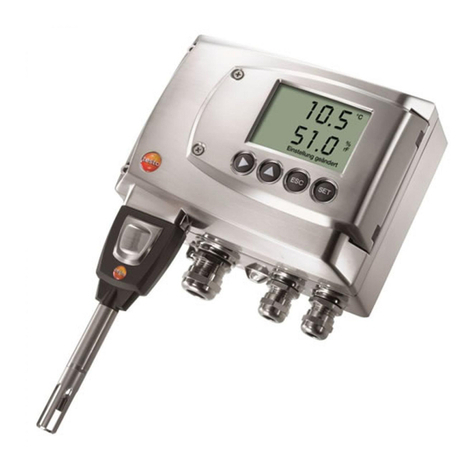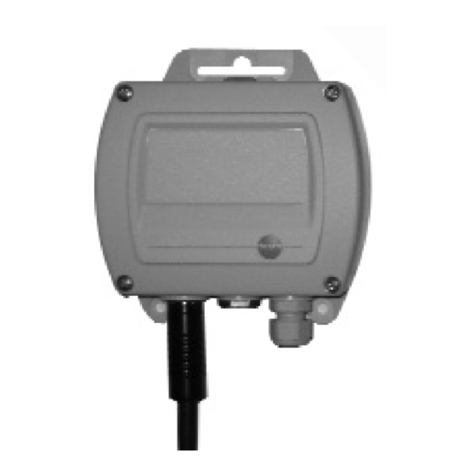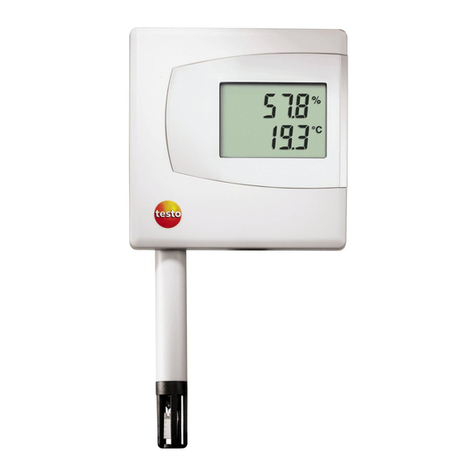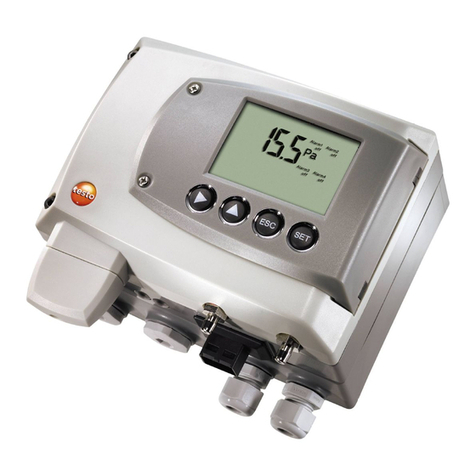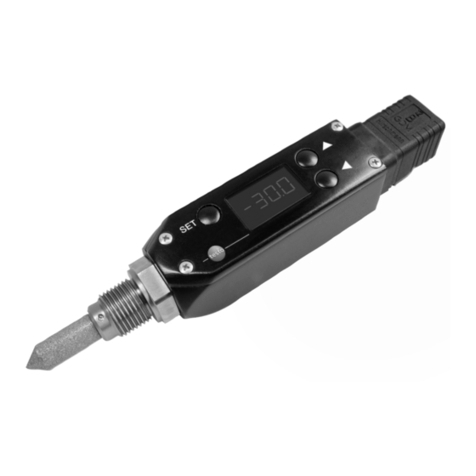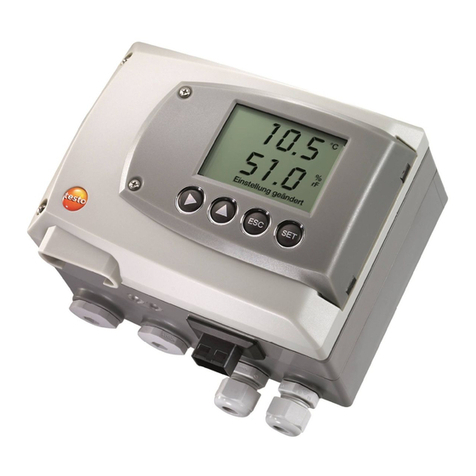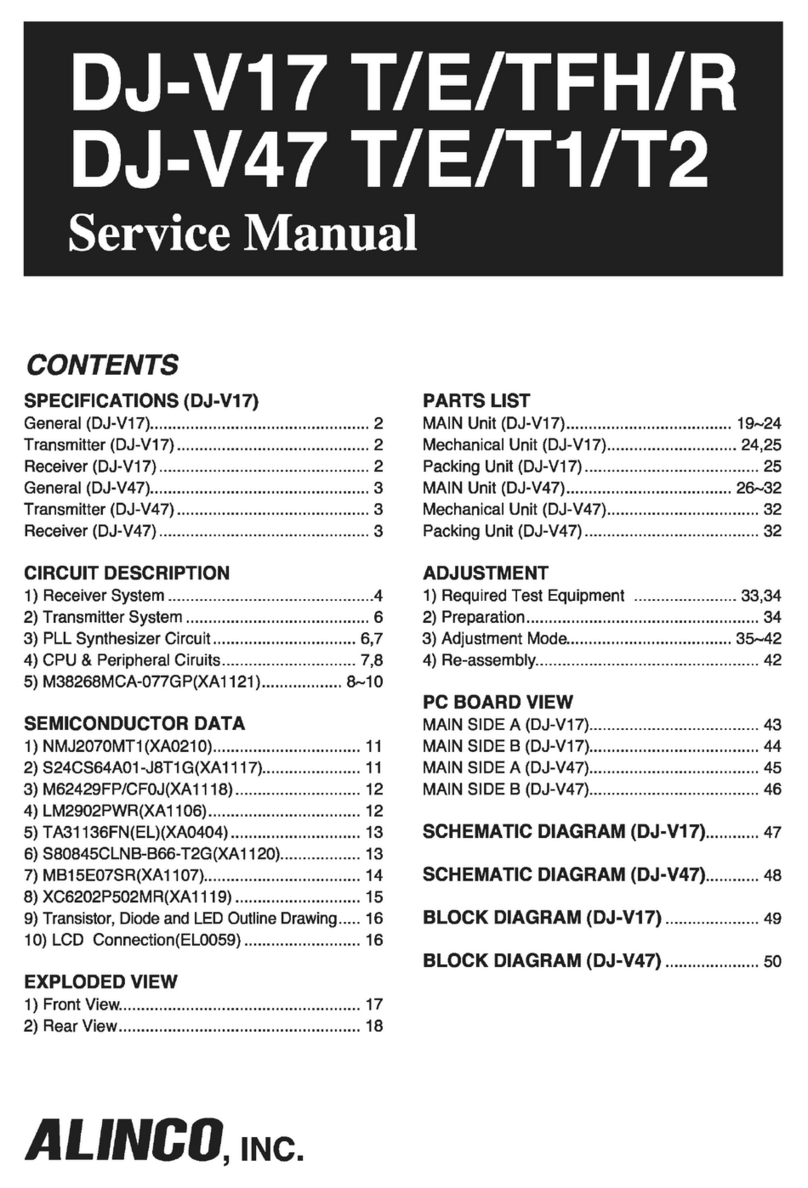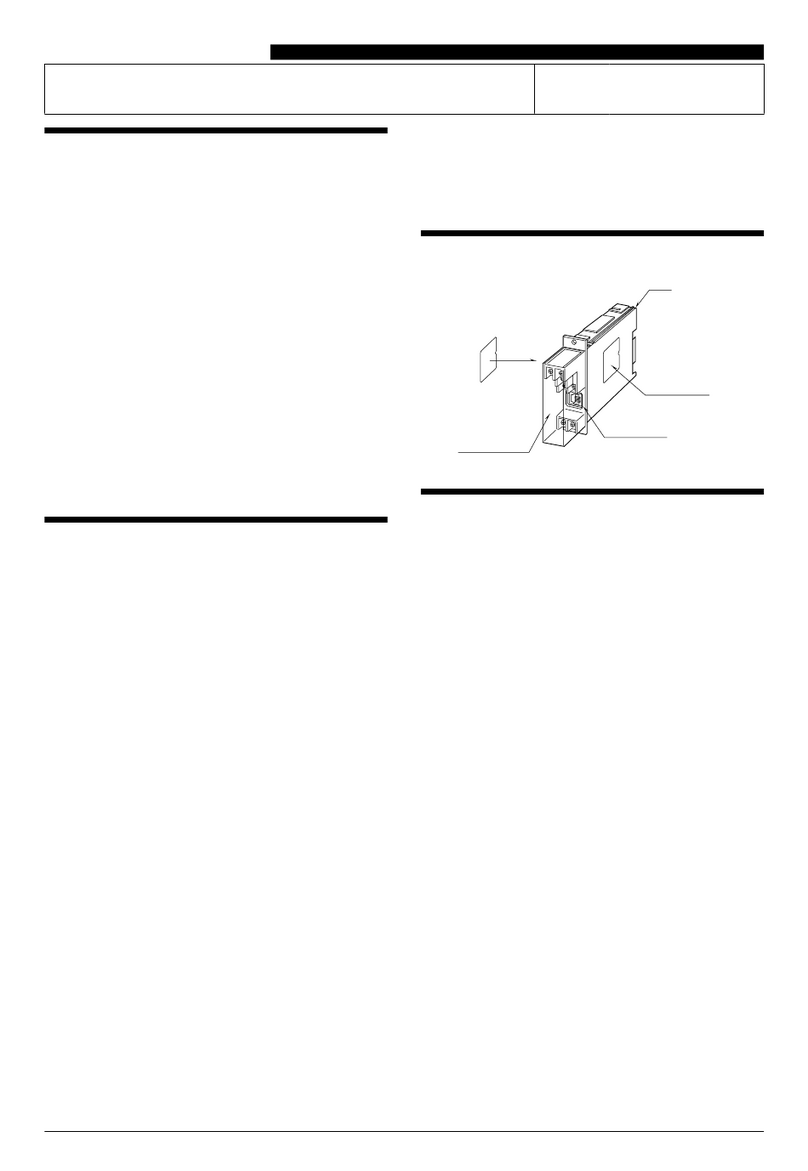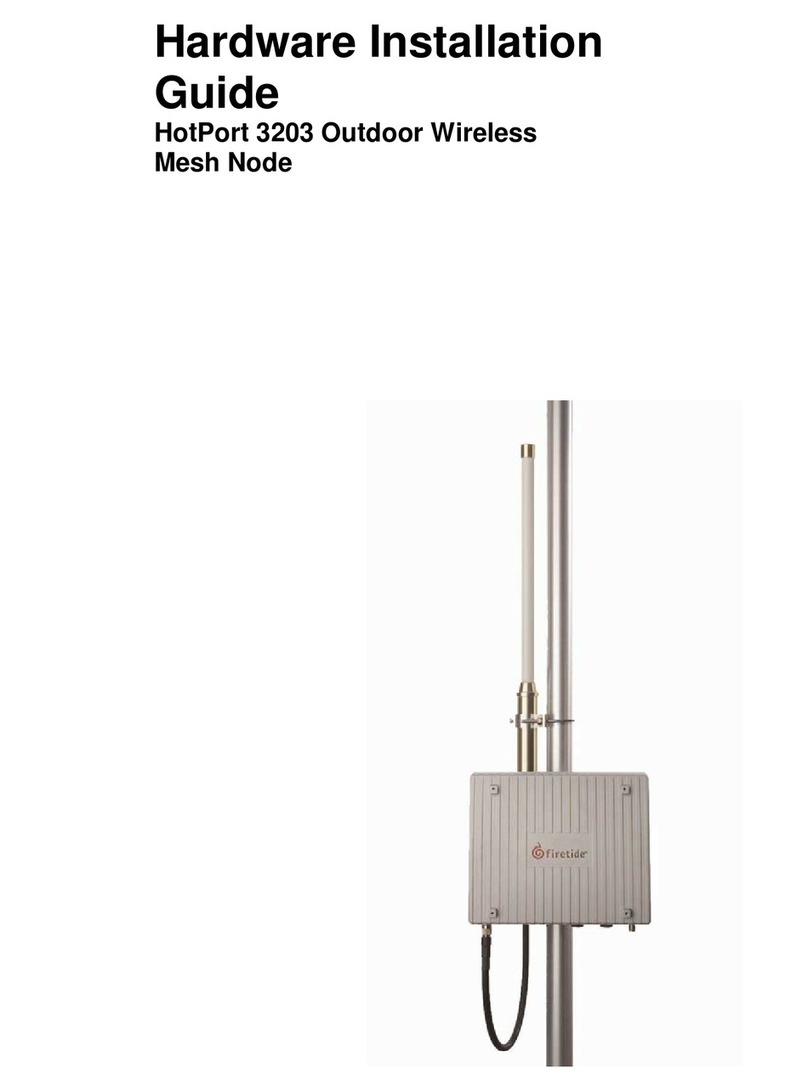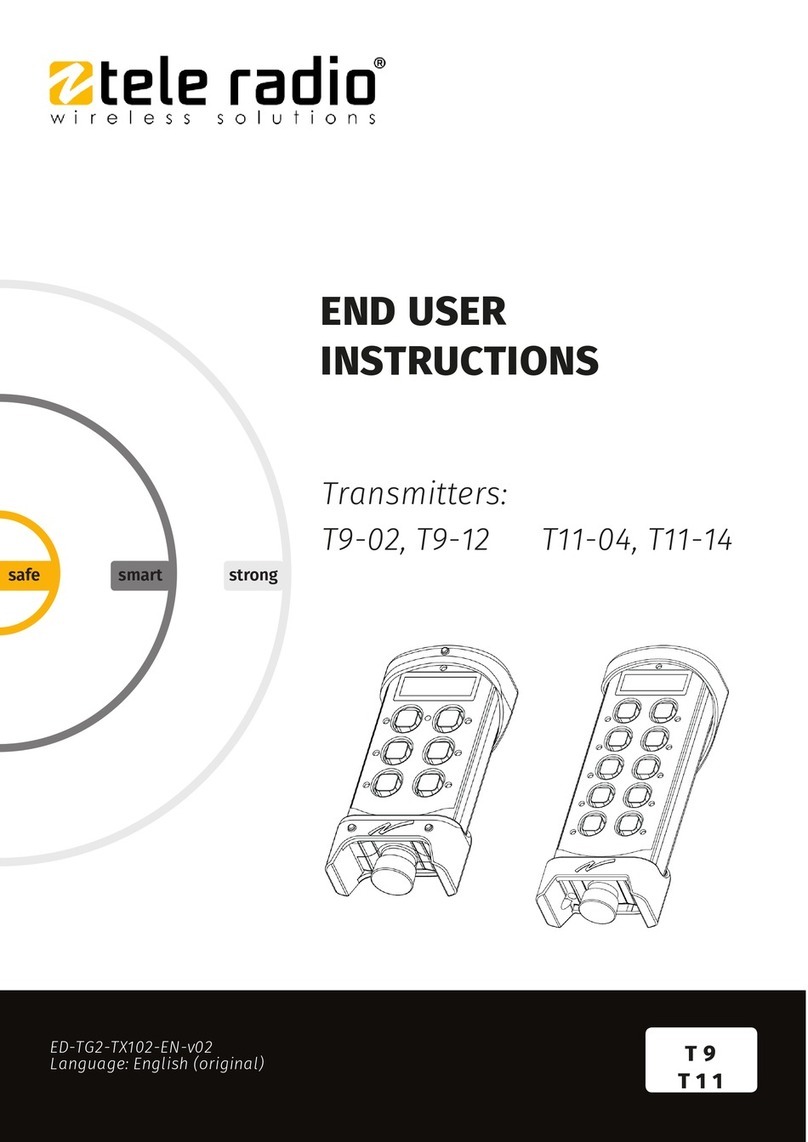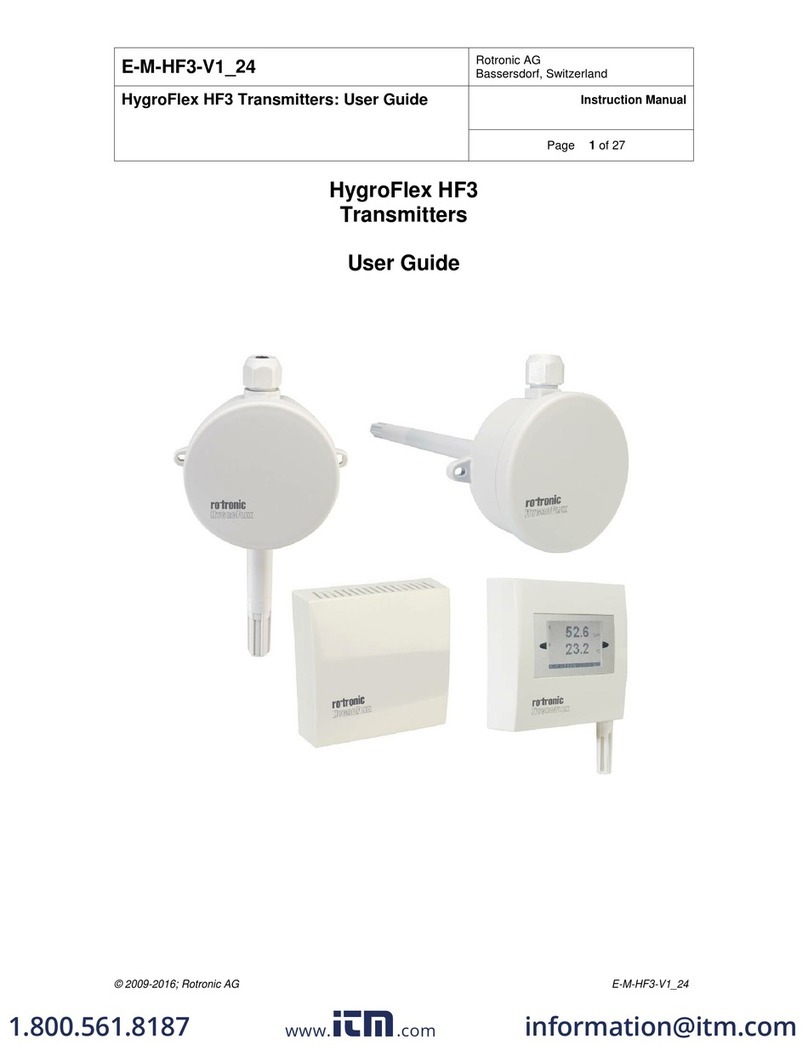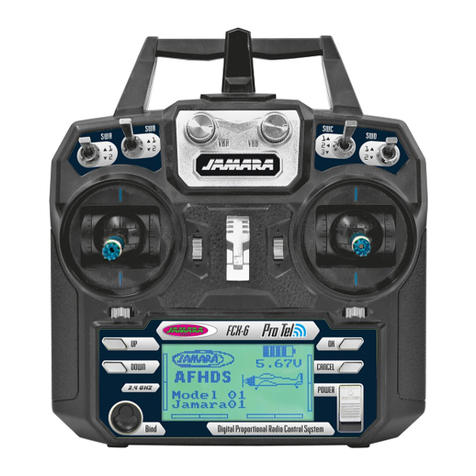
testo 6631 - Specifications 7
Technical data
Sensor
· Humidity: Testo humidity sensor, temperature: NTC
· Temperature NTC plug-in
Measuring ranges
· Humidity: 0 - 100 % RH (not for high humidity
process)
· Temperature: -10 - +60 °C/14 - 140 °F
Accuracy
· Humidity: ±2.5 % RH (0 - 90 % RH), ±4 % RH
(> 90 - 100 % RH)
· Temperature active : ±0.5 °C/0.9 °F
Reaction time (with protective cap and ventilator running)
· Humidity: max. 5 sec (t63% time)
· Temperature: max. 20 sec (t63% time)
Analog outputs
Humidity: 4...20mA (2 or 4-wire)
· Temperature: 4...20mA (2 or 4-wire)
Meas. rate: 1/s
Voltage supply
· 24 V AC/DC ± 10% AC
Ambient conditions
· Operating temperature: -10...+60°C / 14...140°F
· Storage temperature: -20...70°C/-4...158°F
Housing
· Material: ABS, UV-proof
Colour: white
· Dimensions 105 x 139 x 225 mm
· Weight: <800 g,
· Protection class : IP66
· Weight: 1000 g
· Protection class transmitter: IP 65
· Protection class housing: IP 33
Display (optional)
2-line LCD
Directives, standards and tests
· EC Directive: 2004/108/EEC
EMC DIN EN 61000-6-2 (Immunity)
· DIN EN 61000-6-3 (Emission)
Guarantee
· Duration: 2 years
Ventilator
· Max. volume flow: 46.80 m3/h / 13 l/s
· Life expectancy: 37,500 h (40°C)
· Ventilator housing/vane: metal/metal
· Bearing system: slide bearing
· 24 VAC 12 W
defresitptsvnl????





